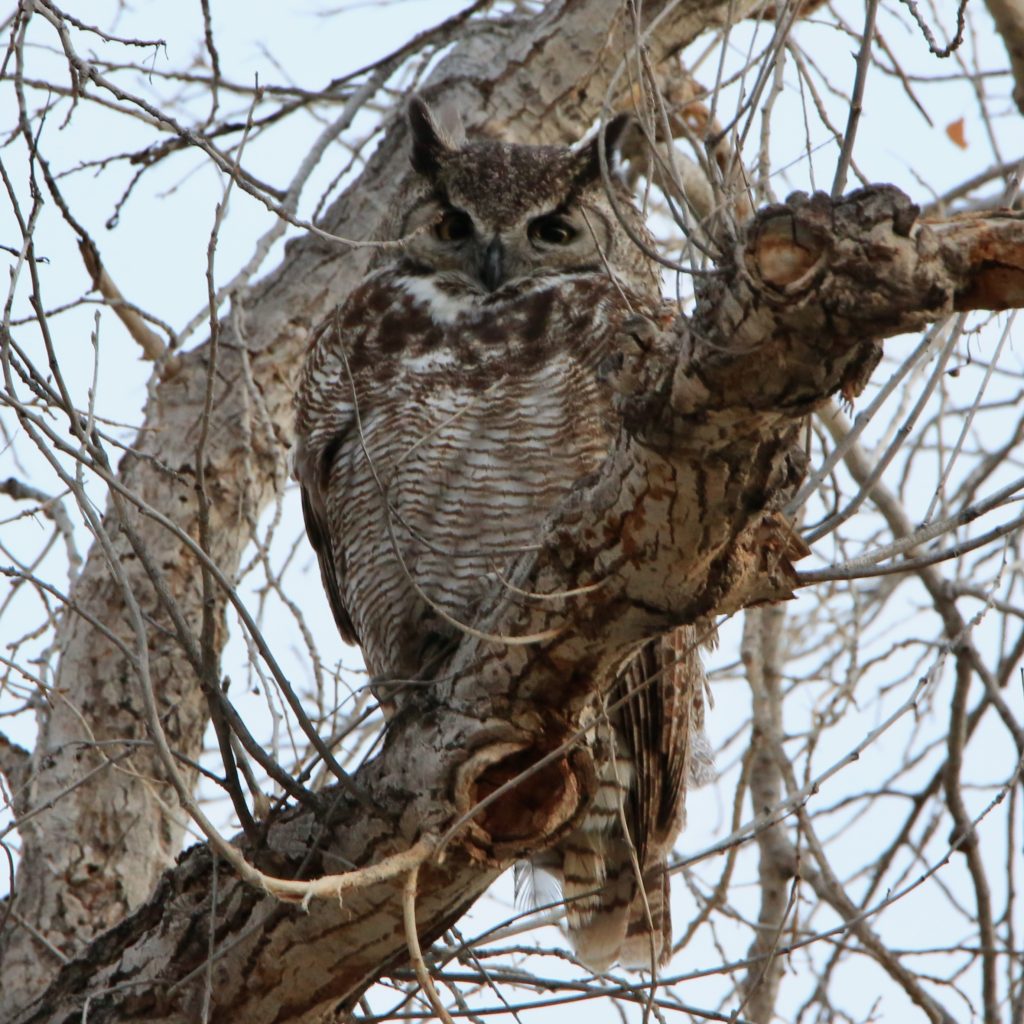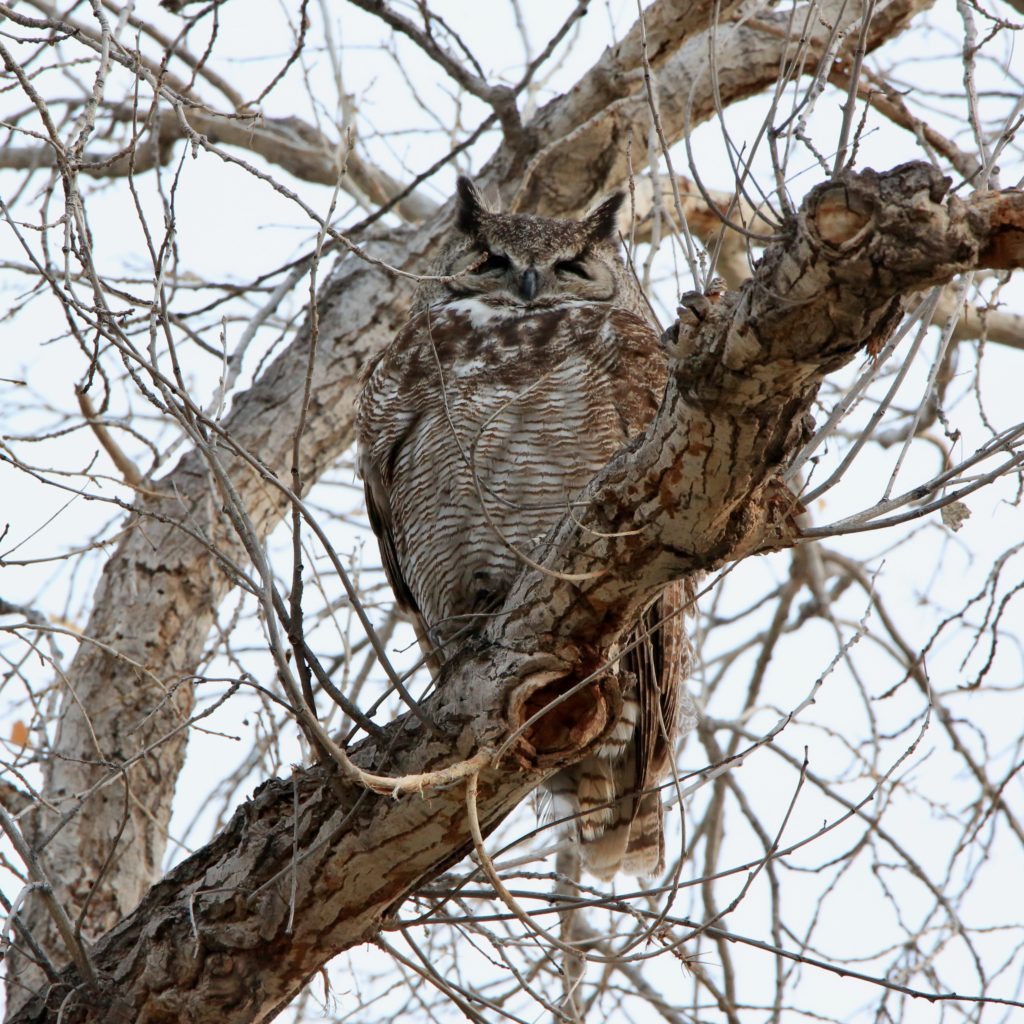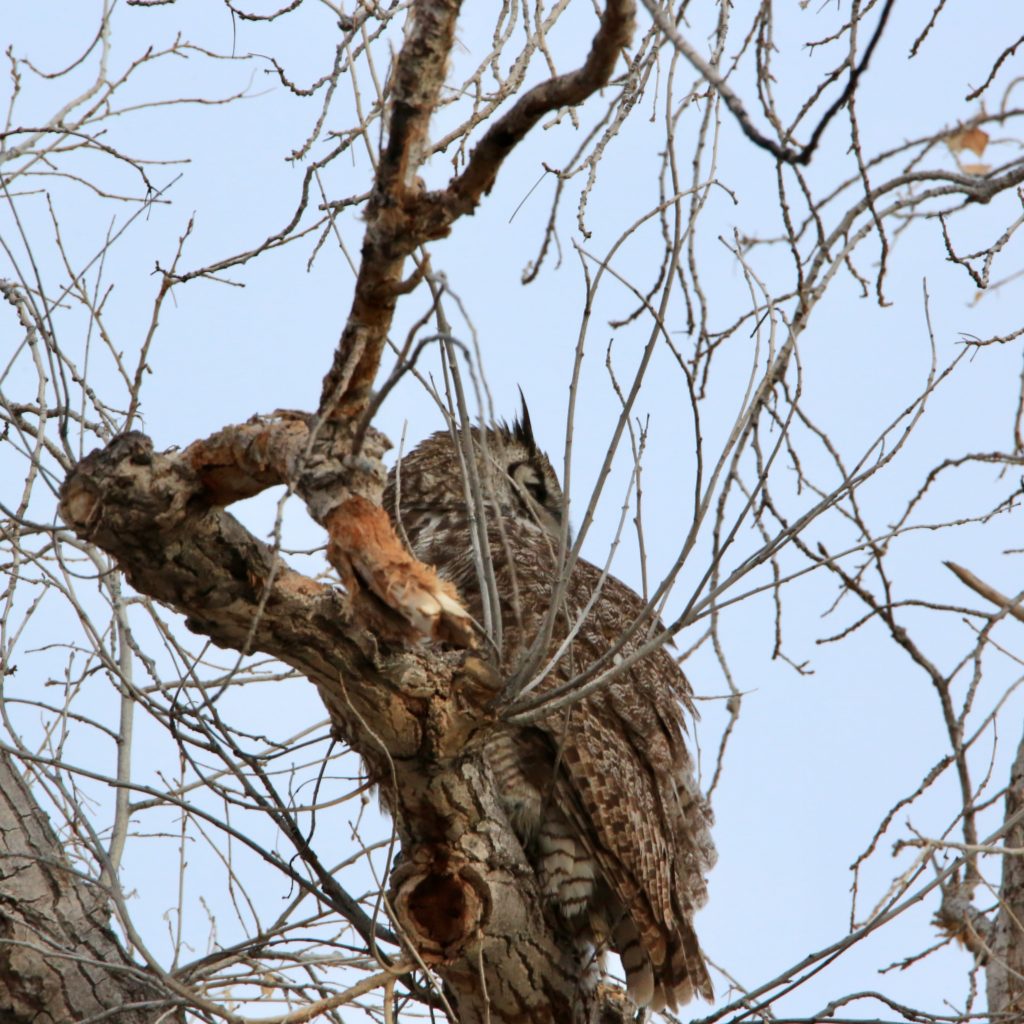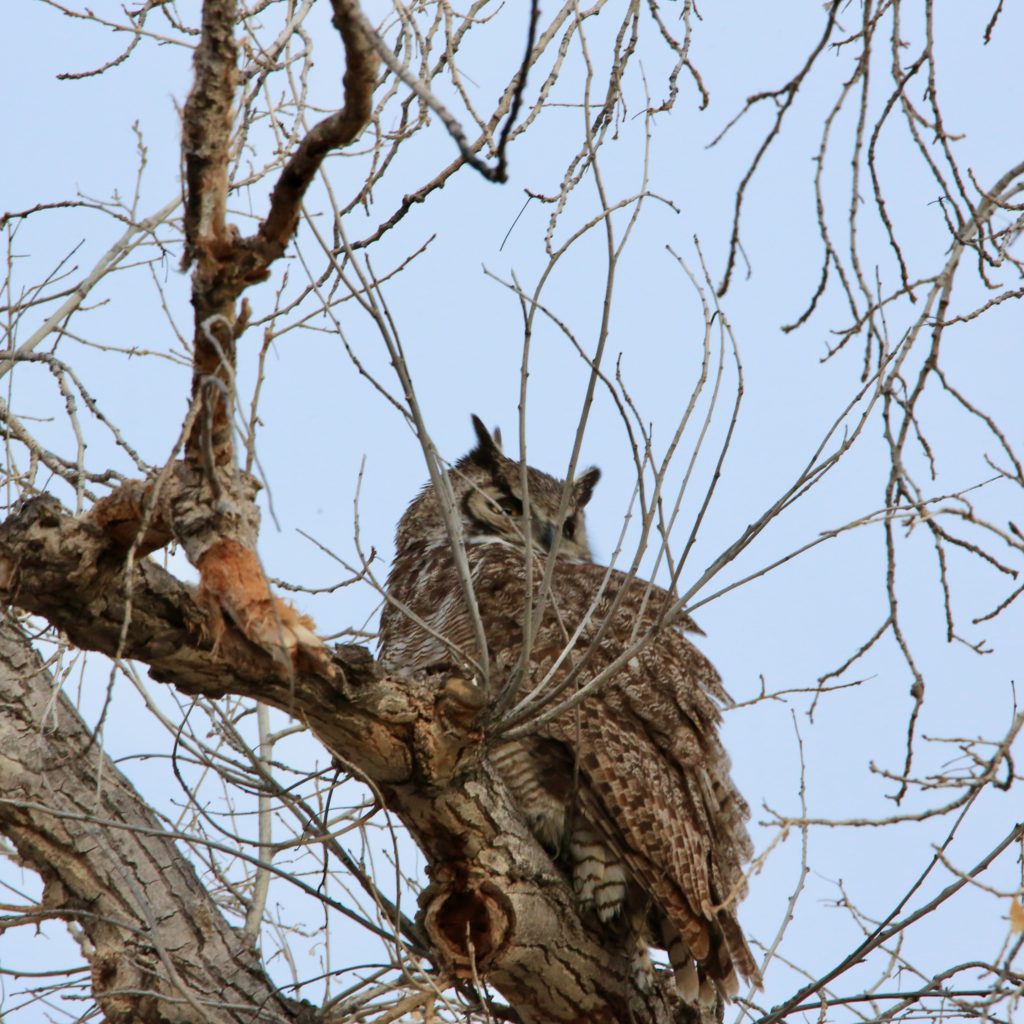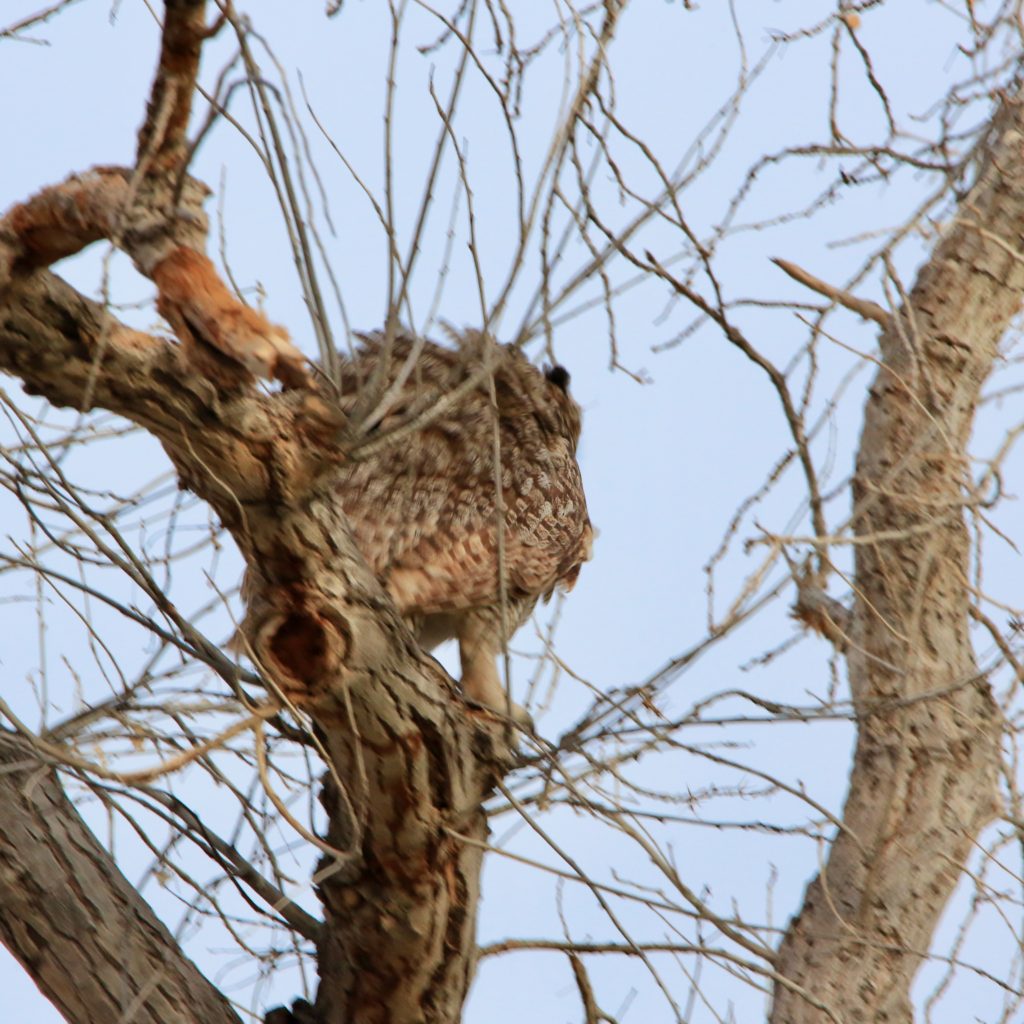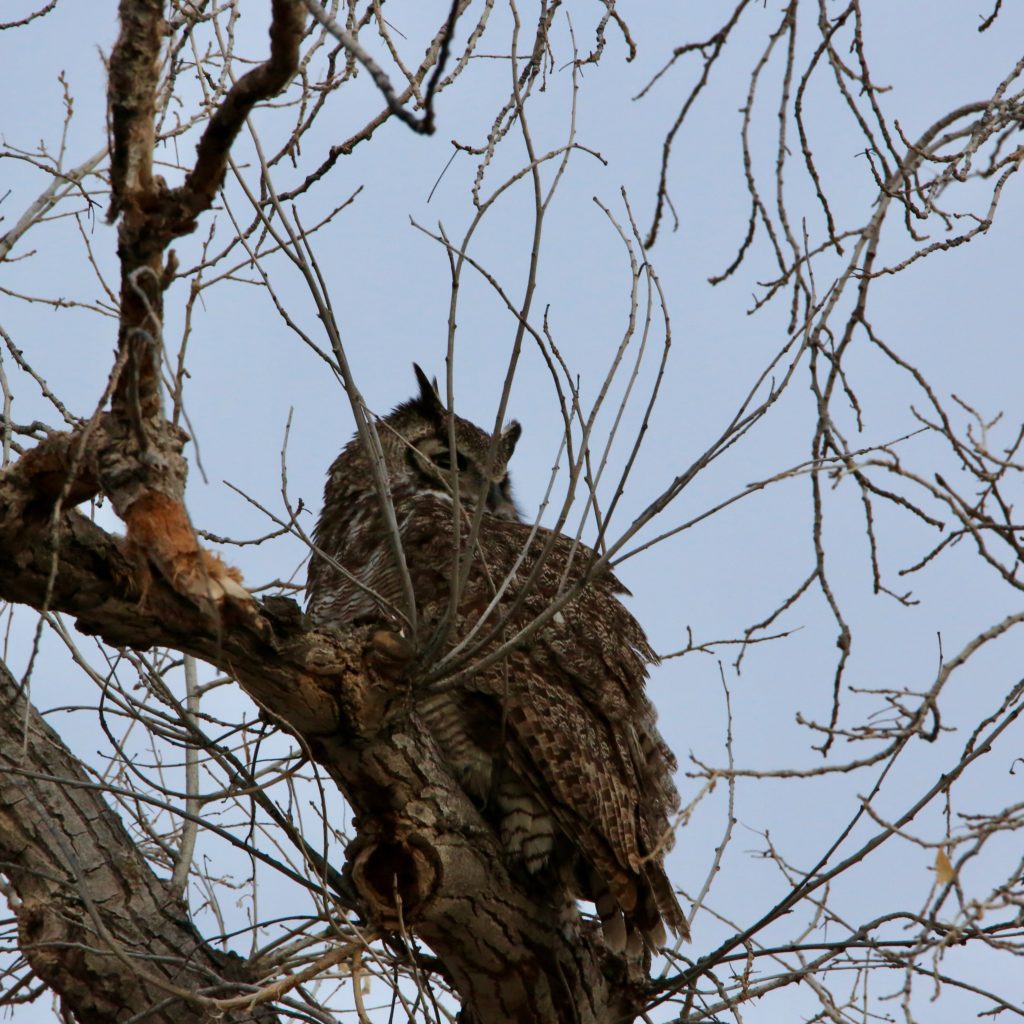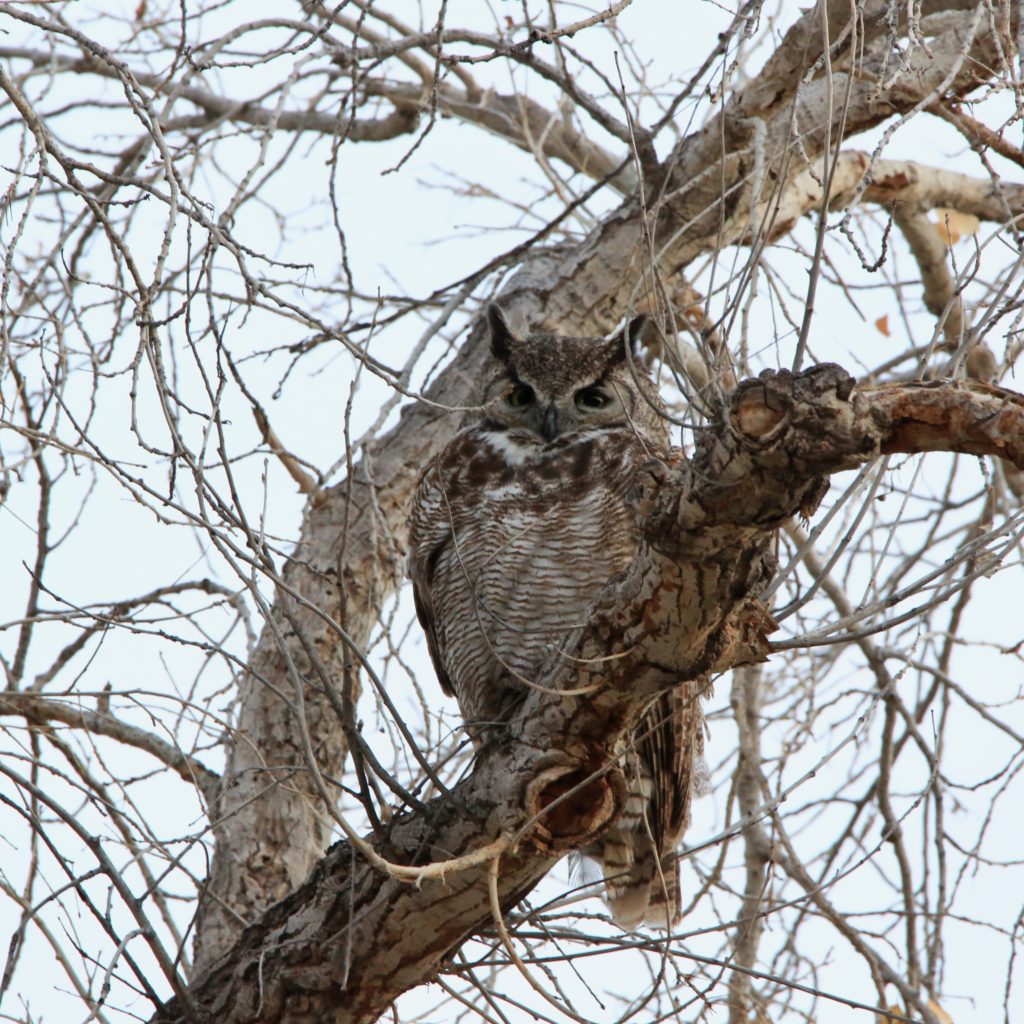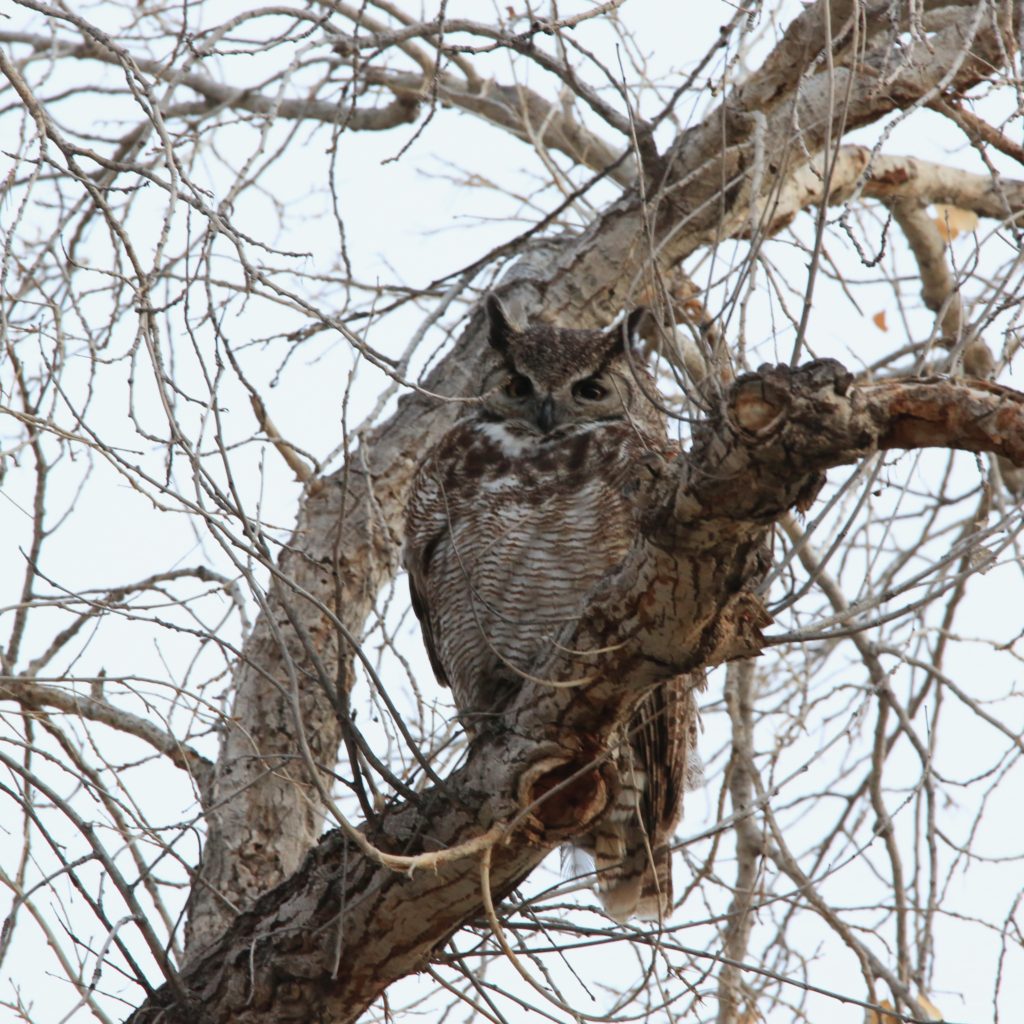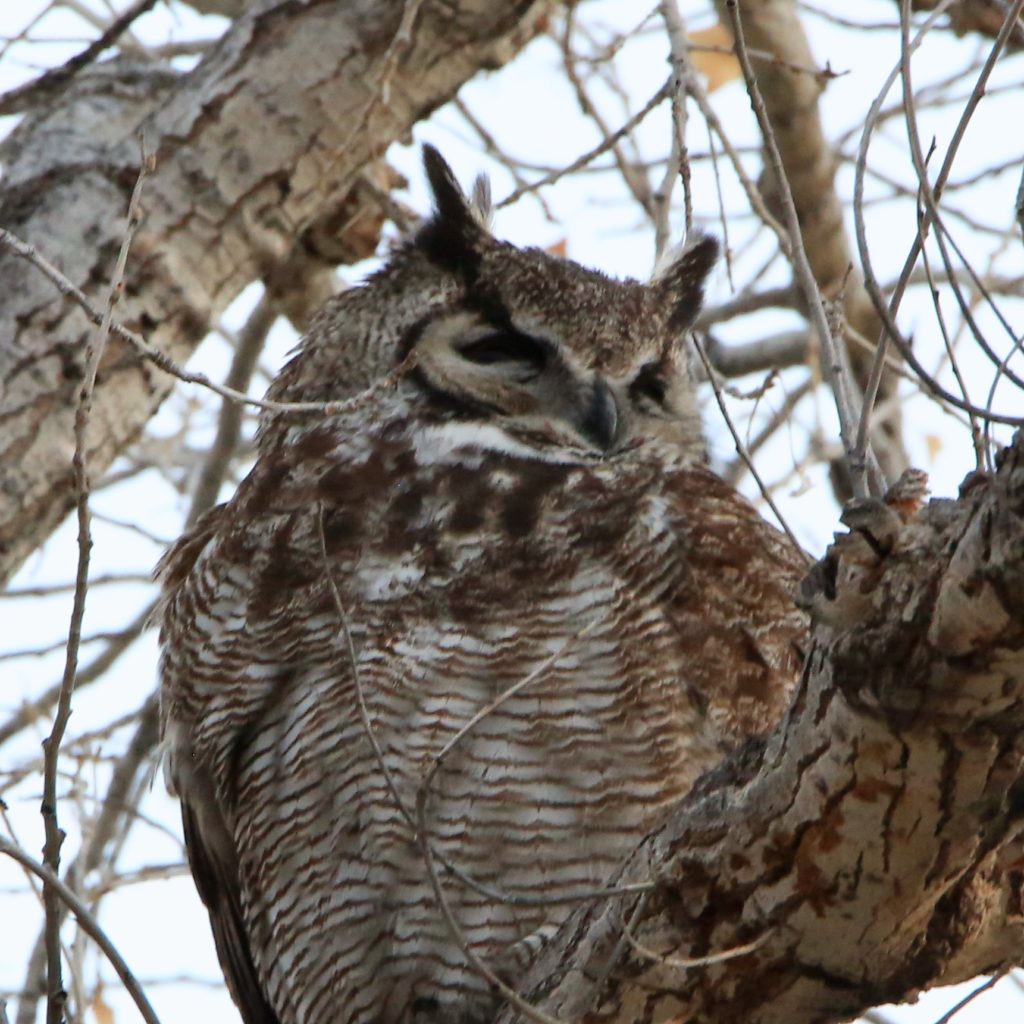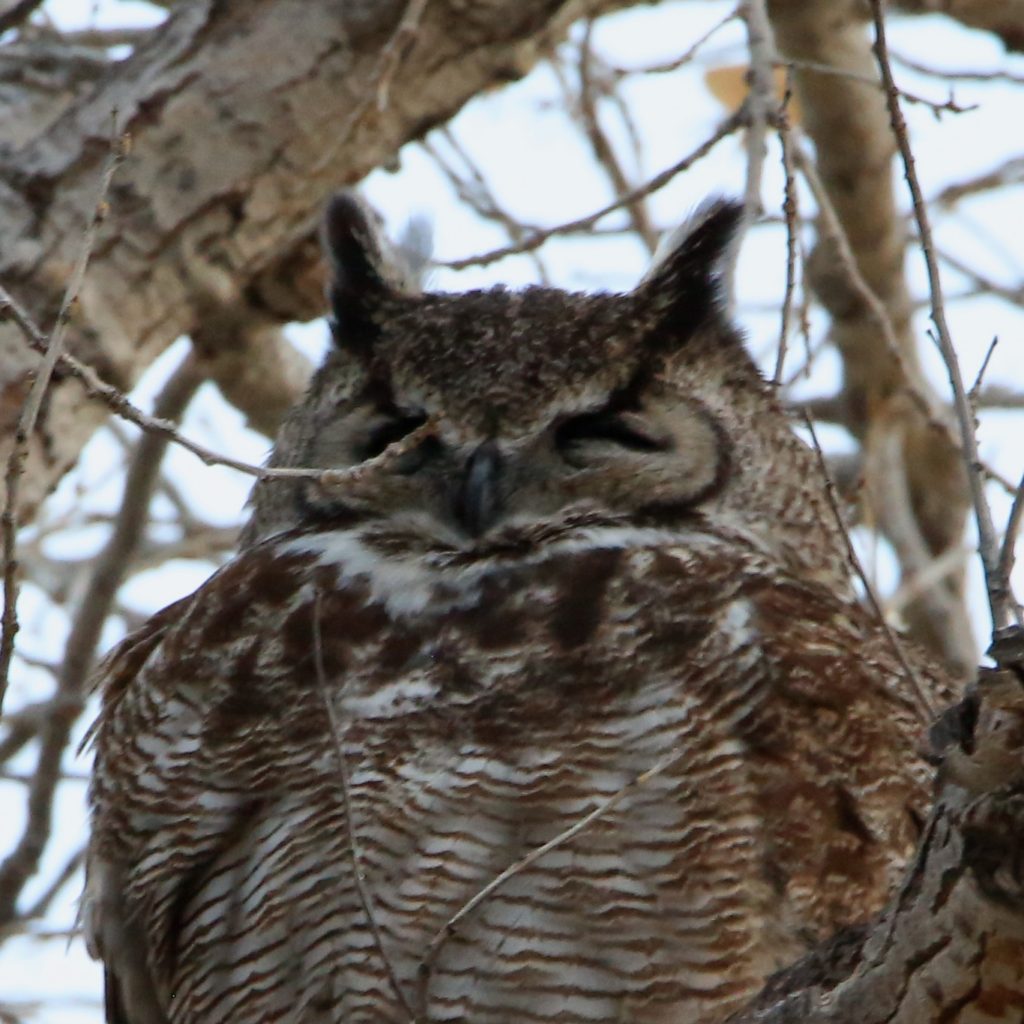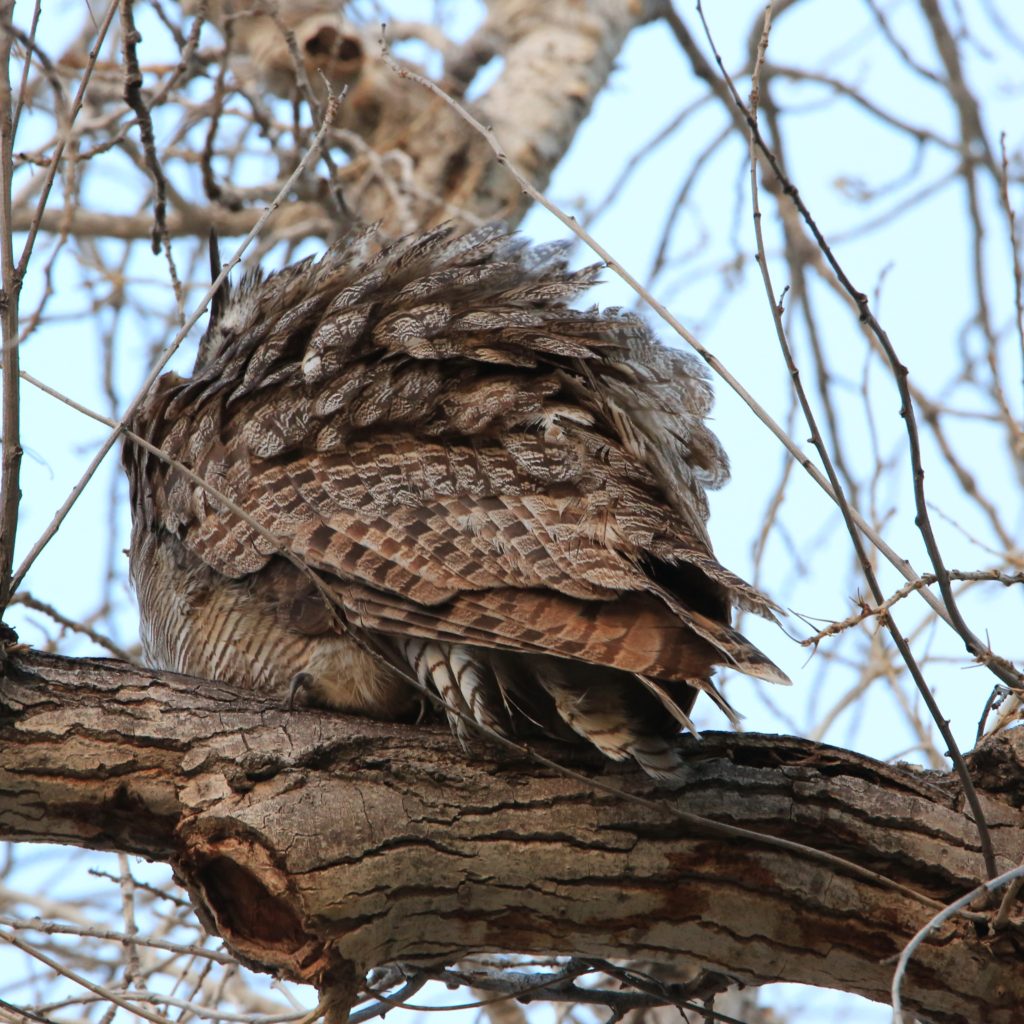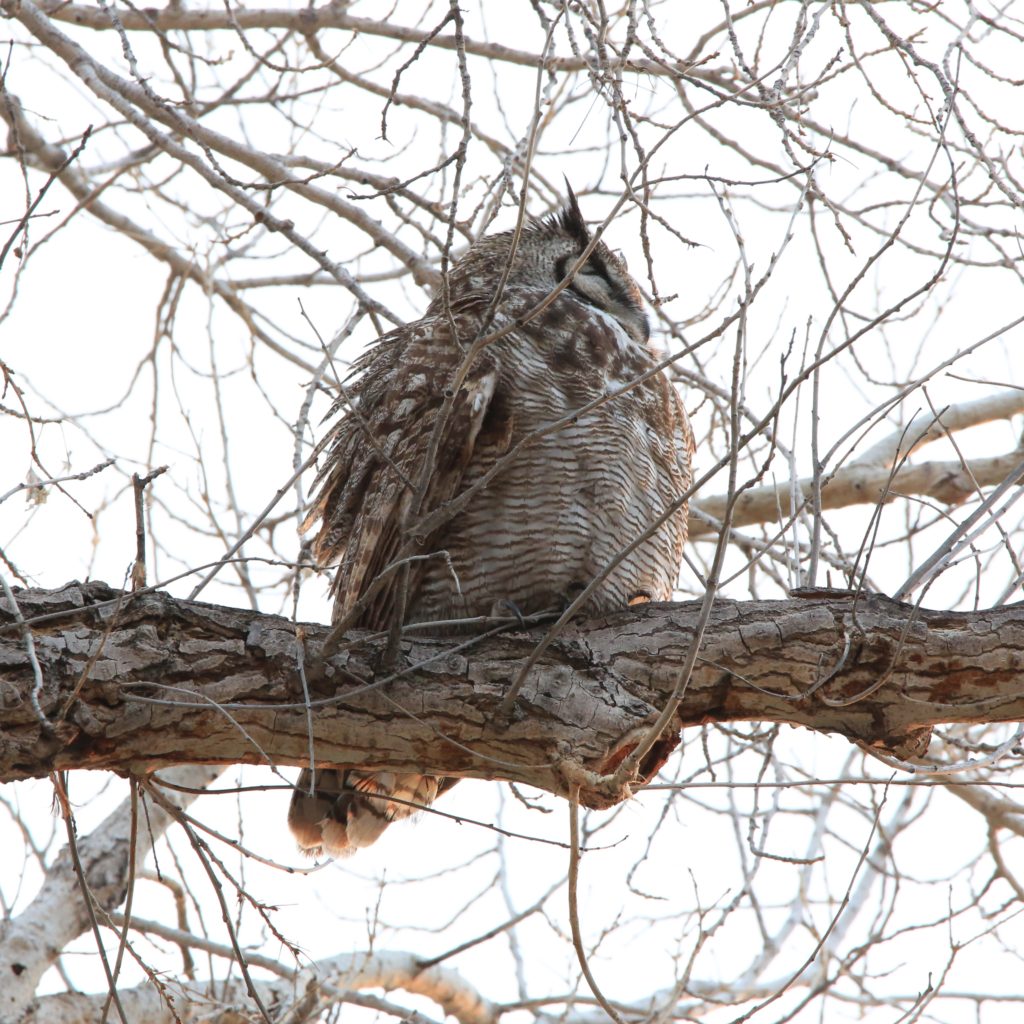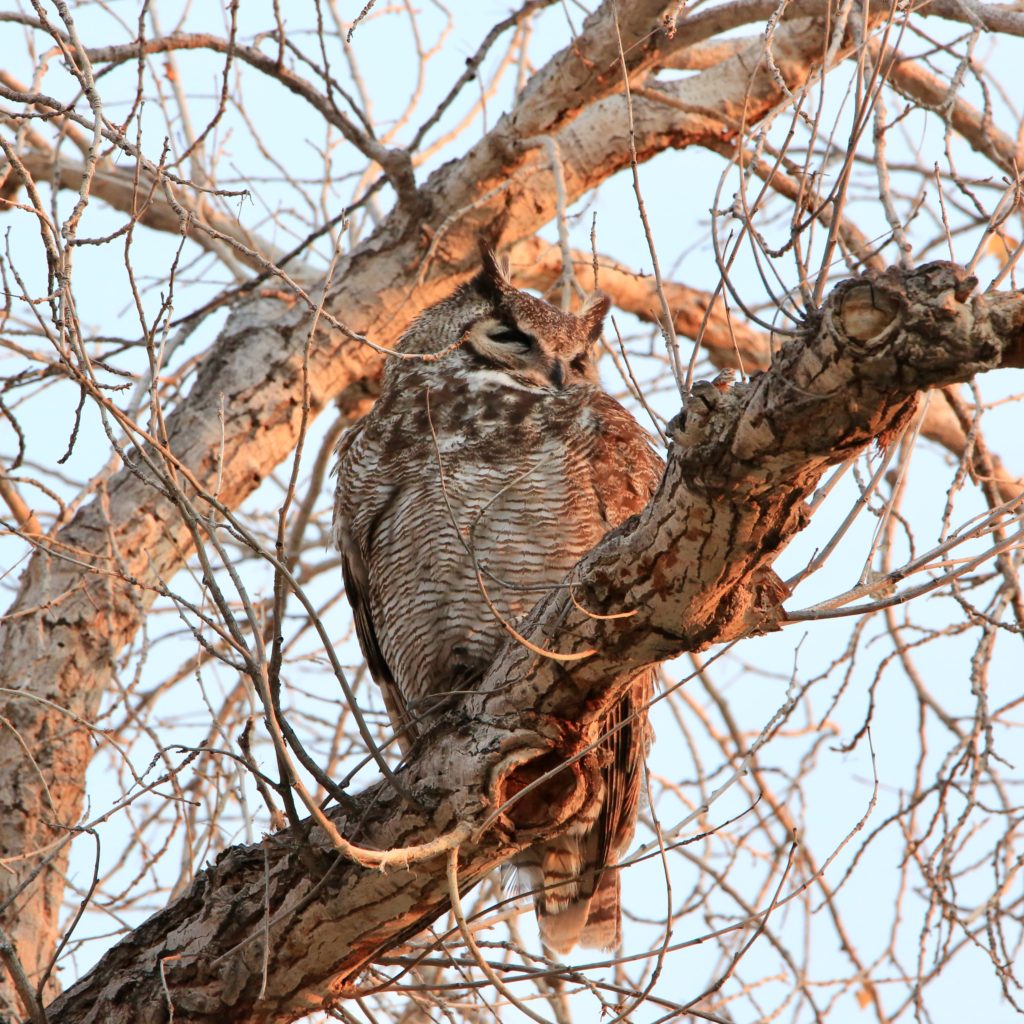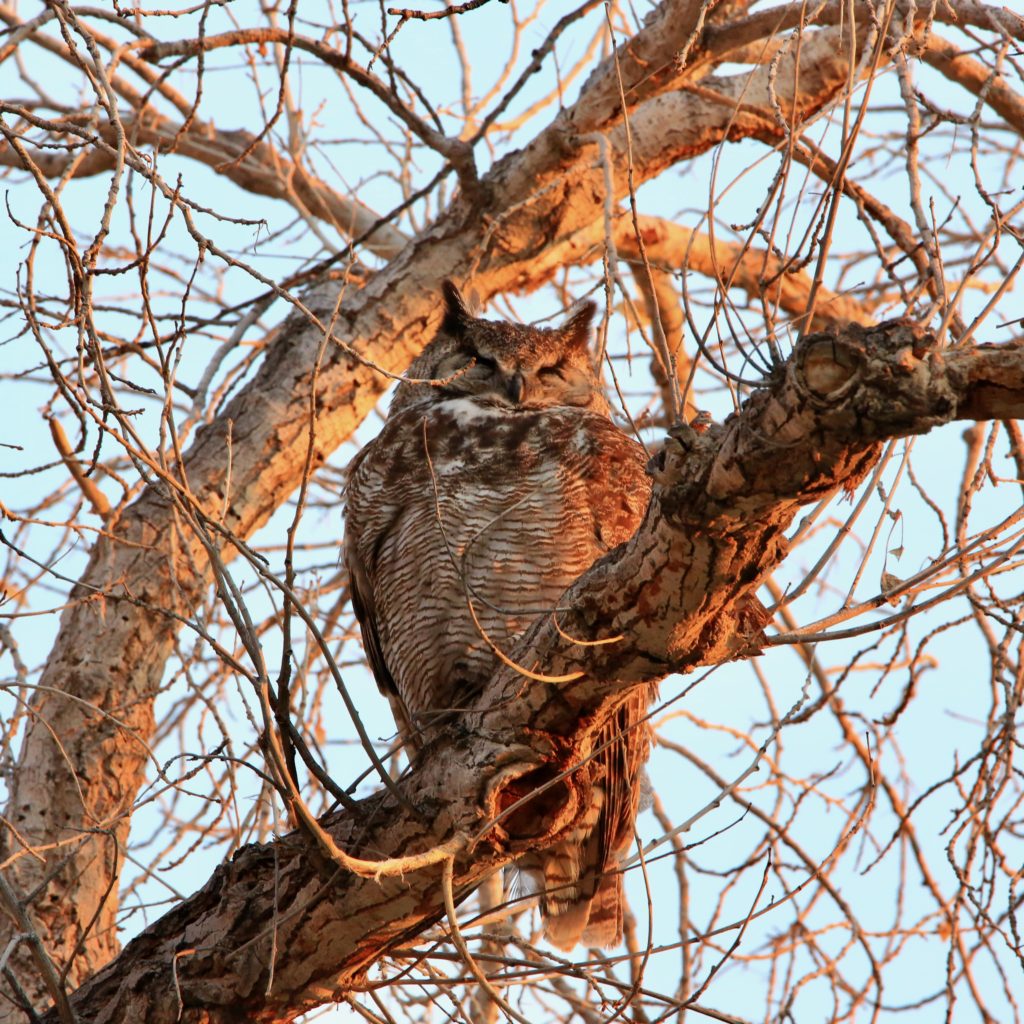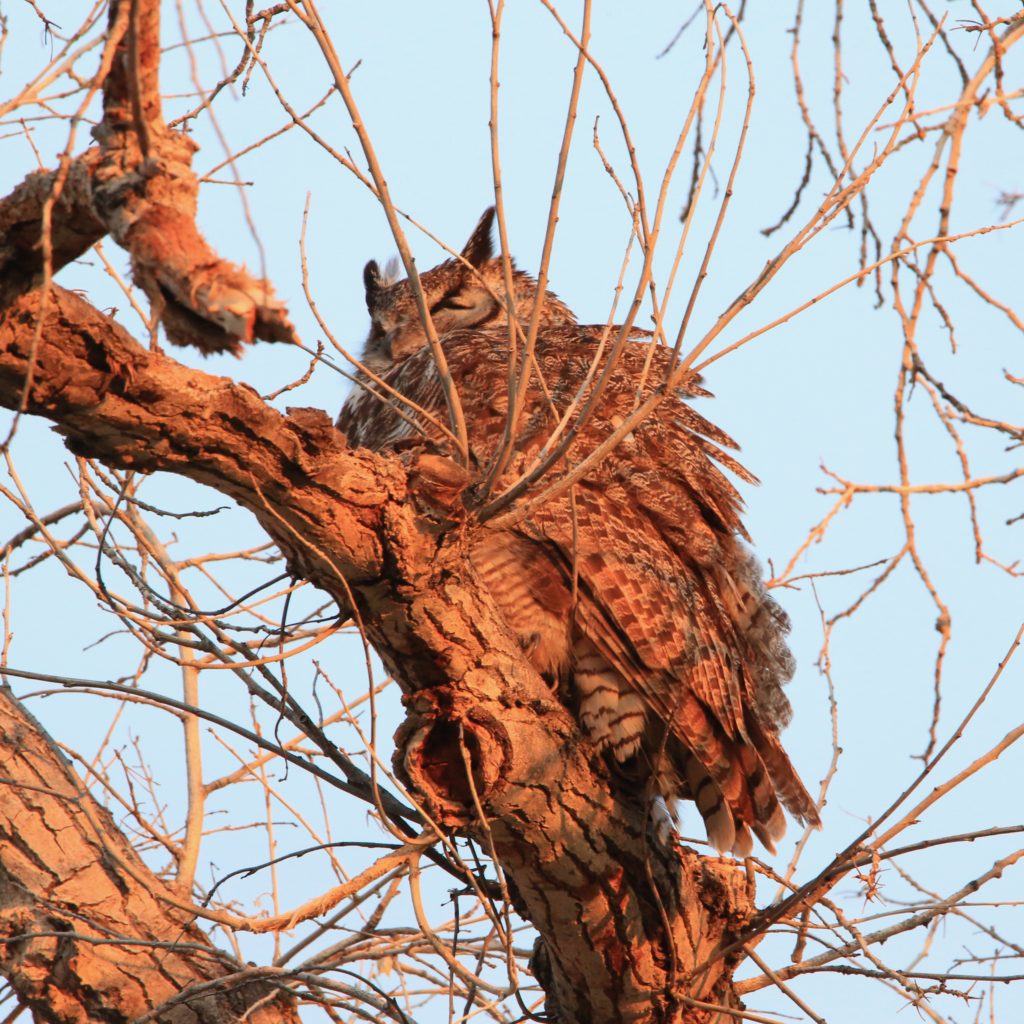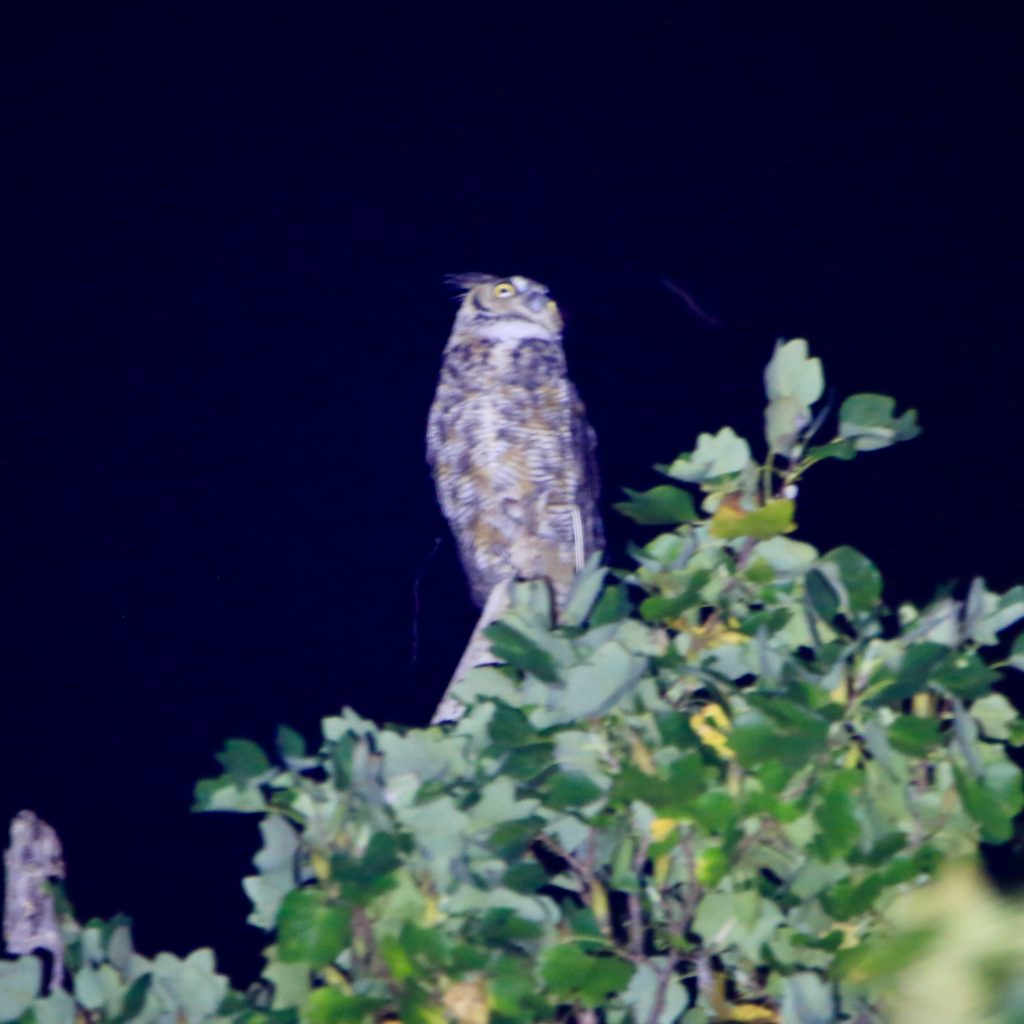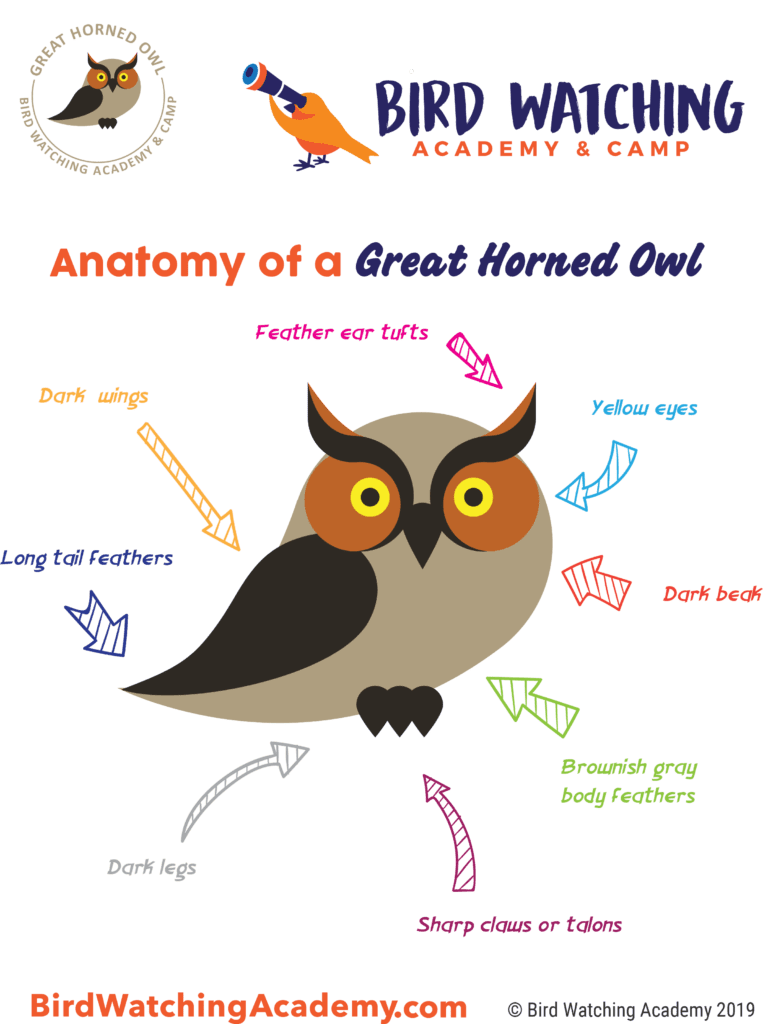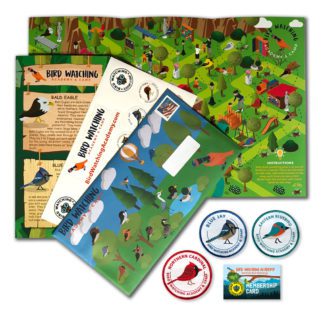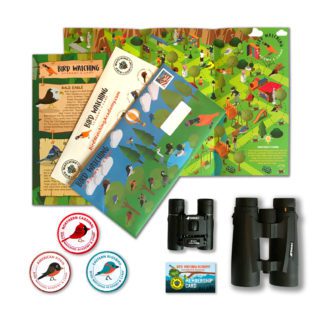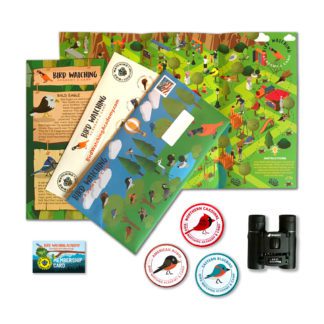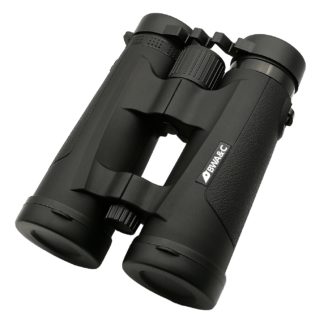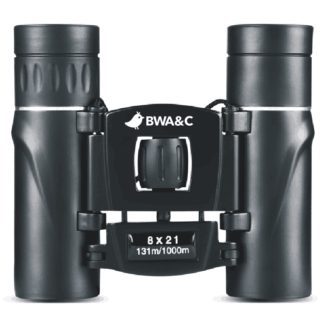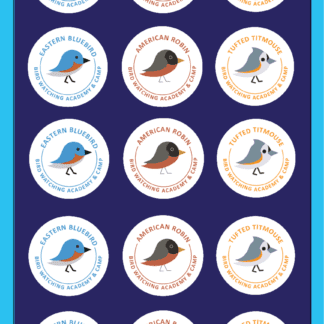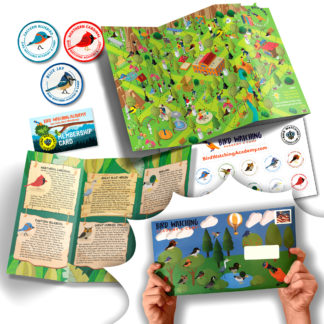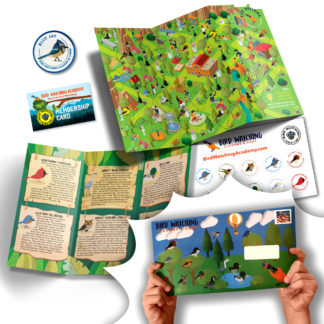
Great Horned Owl
A Great Horned Owl is a fun bird to see while bird watching. Below are some tips to help you identify Great Horned Owls. We have also put together a list of fun Great Horned Owl t-shirts, Great Horned Owl bird patches, bird houses, bird feeders, binoculars, stickers and other fun bird watching items.
About the Great Horned Owl
The Great Horned Owl (Bubo Virginianus) gets its name from the tufts of feathers on its head that resemble ears. This nocturnal raptor is found in all continents except Antarctica. It is also popularly known as the ‘Tiger Owl”.
Great Horned Owl Color Pattern
Their plumage is a mix of mottled brown with white-and-black barring, with some white at the throat. There is much variation in the darkness and shade of these colors across their range.
Description and Identification
One of the most distinguishing characteristics of a Great Horned Owl is its deep hoot. You can hear the sound over long distances. Its eyes are yellow, and they can stare down any prey that dares to challenge it. They have tufts on their heads that look like two long ears. Their wings are full and rounded, and they have rounded heads with short bills. They have thick bodies as well, and, in size, they are somewhat bigger than a Red-Tailed Hawk, or somewhere between a crow and a goose. They are about 18 to nearly 23 inches in length, and weigh between 32 and 88 ounces. Their wingspan is between 40 and just over 57 inches. Their coloring ranges with white, black, and warm brown plumage.
Great Horned Owl Size
Its most notable attributes are its large size and very prominent “horns”. They are also very large thick-bodied birds with broad and rounded wings.
The relative size for both sexes is:
- Length: 18.1-24.8 in (46-63 cm)
- Weight: 32.1-88.2 oz (910-2500 g)
- Wingspan: 39.8-57.1 in (101-145 cm)

Great Horned Owl Behavior
- Very aggressive and powerful in its hunting prowess
- The Great Horned Owl produces its legendary soft yet vibrant hooting calling; whoo-hoo-ho-o-o!
- These birds have excellent eyesight and hearing making them excellent hunters. Being nocturnal birds, this trait really helps them.
What Great Horned Owl Eat and their Food
The diet of Great Horned Owls varies greatly, and they are raptors that eat meat. They eat many kinds of mammals and birds. They typically eat rabbits, mice, hare, American Coots, and a wide range of other animals. Some of them include chipmunks, voles, gophers, rats, woodchucks, marmots, prairie dogs, bats, skunks, house cats, porcupines, loons, grebes, owls, hawks, crows, ravens, doves, and mergansers. While these form the central part of their diets, they also eat insects, reptiles, invertebrates, fish, and carrion at times. You may see them hunting during the day, even though they typically hunt at night. They watch prey from up high and then fly down to capture it. They may stalk small animals around ground obstacles by walking. In the winter, they may store prey they don’t eat, allowing it to freeze and then eating it later by warming it with their bodies.
These birds are very large and powerful making them very capable of handling preys of a variety of sizes. This nocturnal raptor is a carnivorous bird that hunts small mammals like rabbits and mice, birds like the duck and quail. Its swallows its small preys whole but tears large prey limb from limb before indulging.
Where Great Horned Owls Live and their Habitat
The great horned owl lives in woodlands particularly young woods intermingled with open areas, along cliffs and canyons and at the edge of forests. Great Horned Owls like to hang out in secondary-growth woodlands, agricultural areas, orchards, and swamps. You can spot them in mixed, coniferous, and deciduous forests. They tend to gravitate toward old-growth stands in some places, like the southern Appalachians. Great Horned Owls are present in fields, pastures, agricultural areas, and wetlands, which are all open areas, but you’ll also find them in forested areas. If you live in the suburbs or the city, keep a lookout because they live in these areas, too. If you’re ever in the desert, you may see their nests in junipers and on cliffs.
Range and Migration
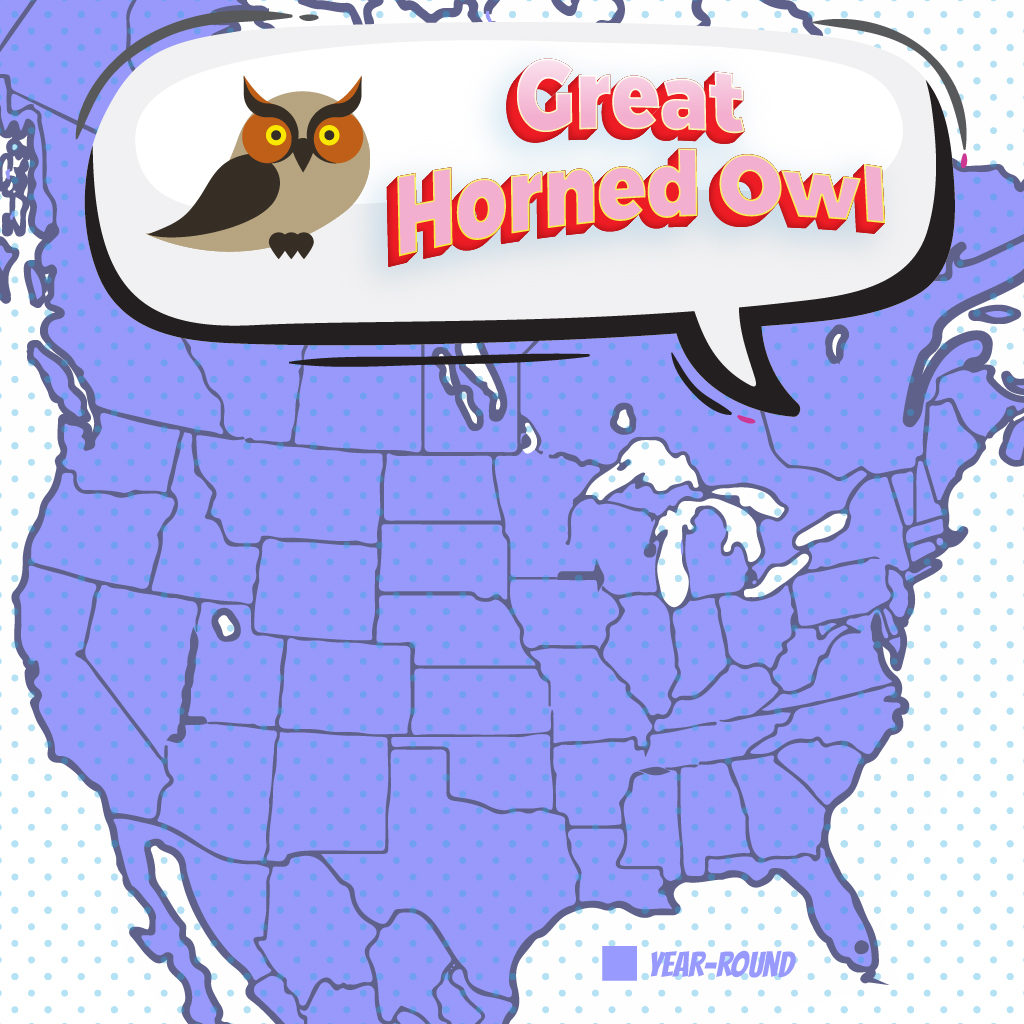
Great Horned Owls live throughout North America. You’ll find them across the United States, far north into Canada, and in many parts of Alaska. They are also present in most of Mexico and some Central American countries. They are some of the most common owls in North America, and they live in just about any semi-open habitat from near the equator up to the Arctic region. The Great Horned Owl doesn’t migrate regularly, but some individuals may head south some in the fall and winter. So wherever you’re at in North America, there’s a good chance that there are Great Horned Owls somewhere nearby.
Great Horned Owl Lifecycle
For the Great Horned Owl, the months of January and early February are prime mating seasons. As they do not make their own nests, they use nests abandoned by other birds to begin nesting. The female bird lays eggs two to three dull whitish eggs that take about 4 weeks to hatch. Both the male and female birds practice incubation and fend for the owlets. The owlets leave the nest at the age of one to two months and can fly on their own at 9-10 weeks old.
Nesting
Great Horned Owls may start nesting in the last part of winter in the north. This could be so young can learn how to hunt before winter begins again. The male Great Horned Owl shows off his flight skill to and feeds the female. These owls usually may use nests of other big birds, like crows, hawks, herons, or eagles, and their nests are high off the ground, typically between 20 and 60 feet. They usually don’t add much in the way of nest material, except for perhaps some feathers. You may also find their nests on the edges of cliffs, in tree stumps, and maybe on the ground. If you find a cave, don’t be surprised if you see a nest of a Great Horned Owl in there!
Anatomy of a Great Horned Owl
Anatomy is the study of animals or other organisms and their parts. Bird Anatomy is the study of bird and their parts. Birds have beaks, wings, talons, feathers, and other parts that are important to learn about. Learning about bird anatomy will also help kids learn how to identify birds. We focus on the exterior, external, or outside anatomy of birds to help kids learn how to identify them.
Some other types of bird anatomy are the skeletal system, muscular system, circulatory system, respiratory systems, and digestive systems. Birds also have reproductive systems, nervous systems and immune systems. Birds are amazing creatures.
FREE PRINTABLE BIRD ANATOMY INFOGRAPHIC
Here is a fun printable design to help kids learns about Great Horned Owls.
CLICK HERE TO DOWNLOAD AND PRINT THIS FILE Bird Anatomy Great Horned Owl
Below is a blank copy to test your kids on the bird anatomy of a Great Horned Owl.
CLICK HERE TO DOWNLOAD AND PRINT THIS BLANK TEST FILE Bird Anatomy Great Horned Owl Test
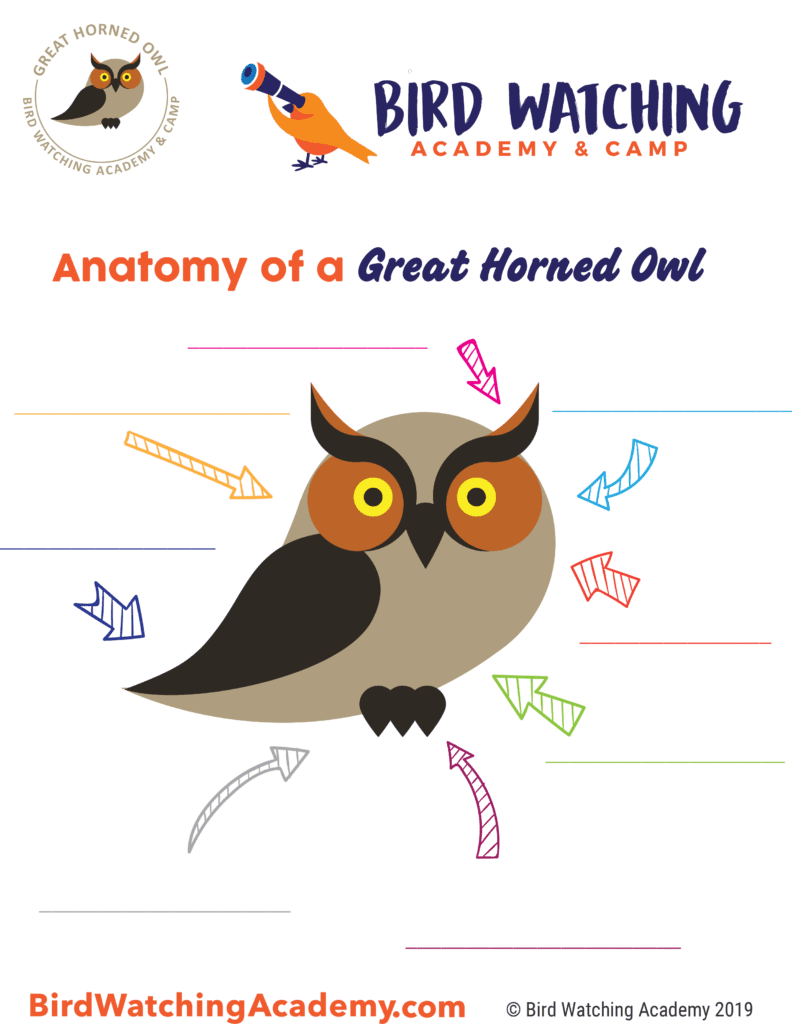
Ornithology
Bird Watching Academy & Camp Subscription Boxes
At Bird Watching Academy & Camp we help kids, youth, and adults get excited and involved in bird watching. We have several monthly subscription boxes that you can subscribe to. Our monthly subscription boxes help kids, youth, and adults learn about birds, bird watching, and bird conservation.
Bird Watching Binoculars for Identifying Great Horned Owls
The most common types of bird watching binoculars for viewing Great Horned Owls are 8×21 binoculars and 10×42 binoculars. Bird Watching Academy & Camp sells really nice 8×21 binoculars and 10×42 binoculars. You can view and purchase them here.
Great Horned Owl 3D Paper Craft Model
This Great Horned Owl 3D papercraft model is a great way to learn about birds and have fun doing it. This model is like a puzzle where you have to connect the pieces together. It is designed for adults or skilled crafty teens. The difficulty level is medium to hard but is fun.
- Great Horned Owl 3D Paper Craft ModelProduct on sale$4.99
Great Horned Owl T-shirts
If you love the Great Horned Owl you should purchase a Bird Watching Academy & Camp T-shirt. To help support bird conservation we donate 10 percent to bird conservation activities.
Great Horned Owl Iron On Patches
Kids, Youth, and Adults love to collect our Bird Watching Academy & Camp iron on patches. Our bird watching patches help you keep track of the birds you have seen an identified. You can also display the patches on our Bird Watching Academy & Camp banners.
The Great Horned Owl is a great iron on patch to start your collection with. The patches are durable and can be sewn on or ironed on to just about anything.
Great Horned Owl Stickers
Stickers are a great way for you to display your love for bird watching and the Great Horned Owl. We sell a monthly subscription sticker pack. The sticker packs have 12 bird stickers. These sticker packs will help your kids learn new birds every month.
Great Horned Owl Activities for Kids
We thought a fun perler bead pattern would be fun for kids. Please download and print with 100% scale to fit perfectly with perler bead patterns.
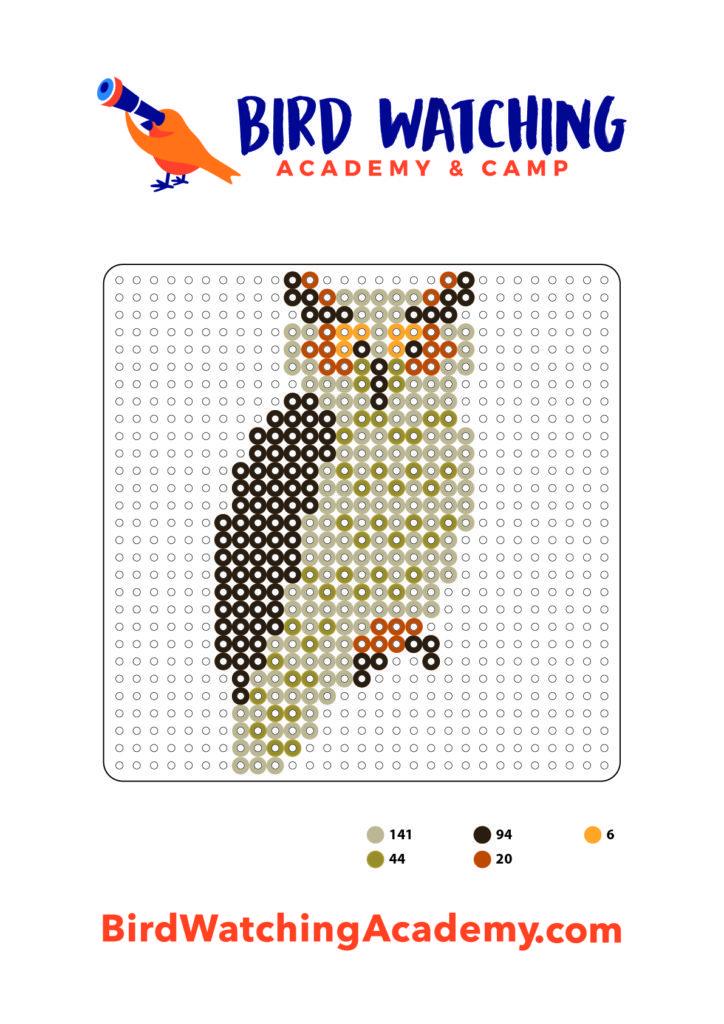
Bird Feeders For Great Horned Owl
There are many types of bird feeders. Here are our favorite bird feeders for your backyard. We use all of these bird feeders currently. Kids will have a great time watching birds eat at these bird feeders. Using this collection of bird feeders will provide a wide variety and many types of birds.
Best Bird Houses for Great Horned Owl
There are many types of bird houses. Building a bird house is always fun but can be frustrating. These 4 bird houses have become our favorites. Getting a bird house for kids to watch birds grow is always fun. We spent a little extra money on these bird houses but they have been worth the higher price and look great.


